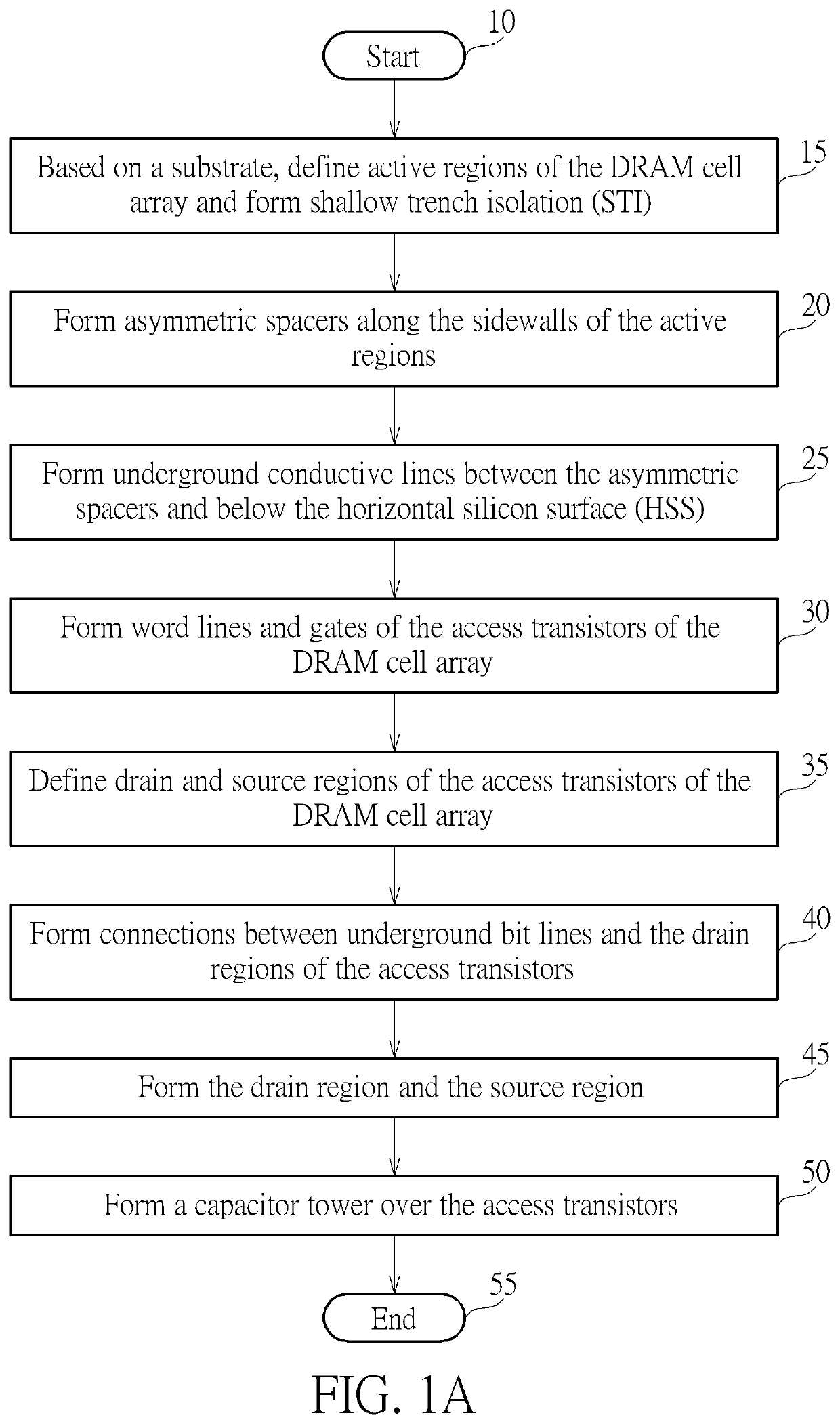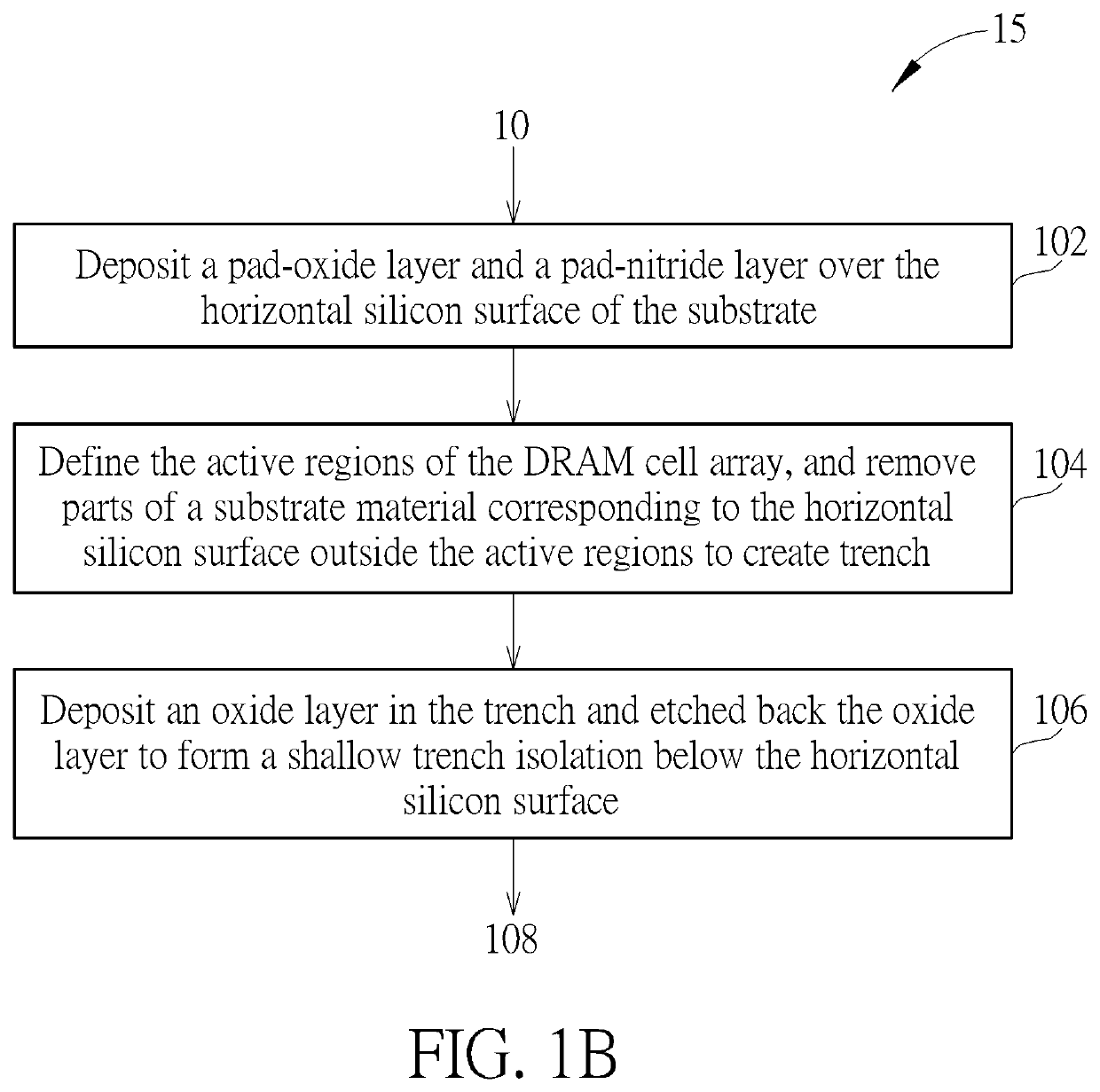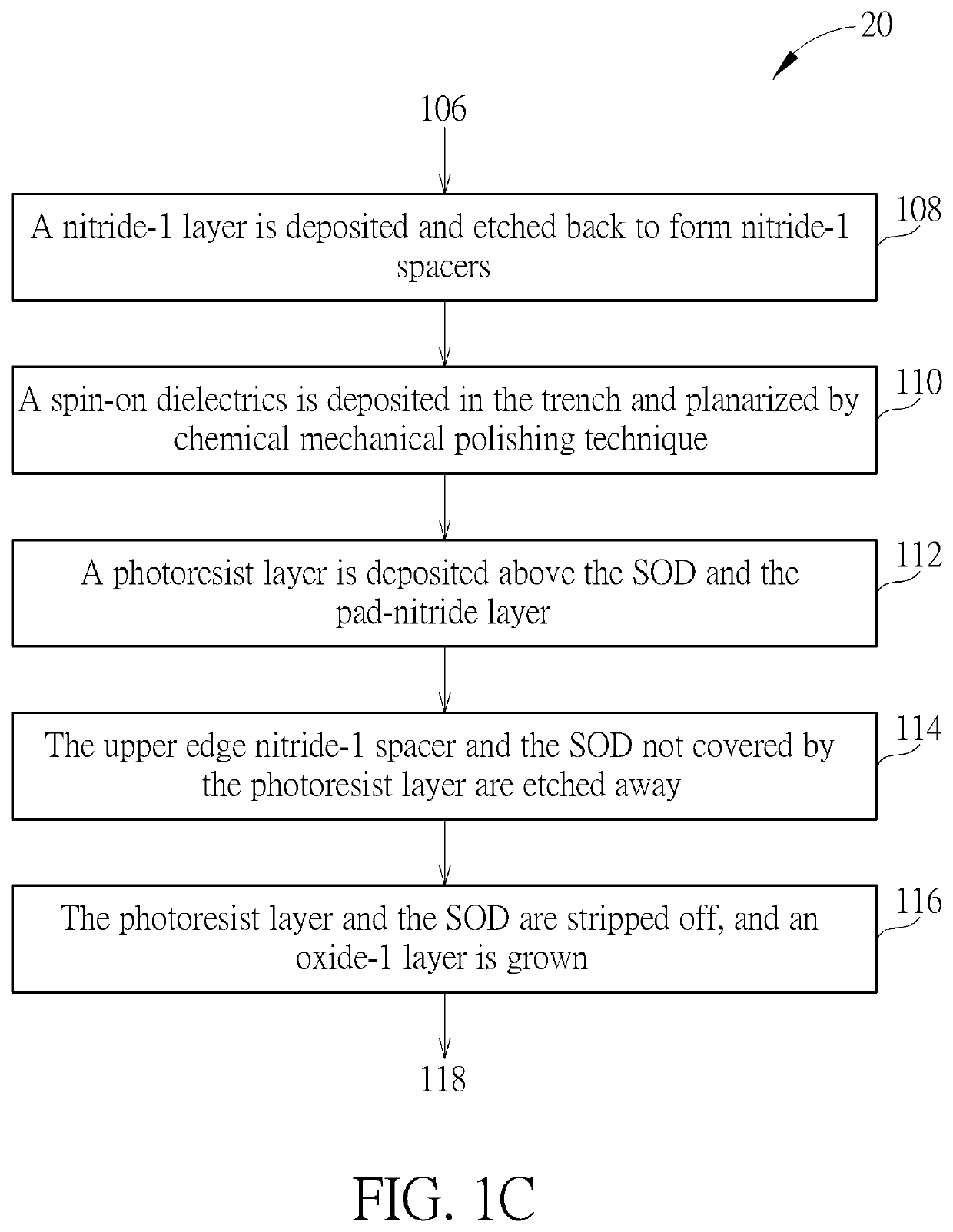Memory cell structure with capacitor over transistor
a memory cell and capacitor technology, applied in the direction of transistors, electrical devices, semiconductor devices, etc., can solve the problems of the capacitor, the structure of the 1t1c memory cell is very difficult to be further scaled down, and the leakage current of the storage capacitor is significantly reduced, so as to achieve the effect of reducing leakage current, reducing leakage current, and maintaining the capacitance of the storage capacitor at a reasonable scal
- Summary
- Abstract
- Description
- Claims
- Application Information
AI Technical Summary
Benefits of technology
Problems solved by technology
Method used
Image
Examples
Embodiment Construction
[0100]Please refer to FIGS. 1A-1F, wherein FIG. 1A is a flowchart illustrating a manufacturing method of a DRAM cell (1T1C cell) array according to an embodiment of the present invention.
[0101]Step 10: Start.
[0102]Step 15: based on a substrate (such as, a p-type silicon substrate), define active regions of the DRAM cell array and form shallow trench isolation (STI).
[0103]Step 20: Form asymmetric spacers along the sidewalls of the active regions.
[0104]Step 25: Form underground conductive lines (such as bit lines) between the asymmetric spacers and below the horizontal silicon surface (HSS).
[0105]Step 30: Form word lines and gates of the access transistors of the DRAM cell array.
[0106]Step 35: Define drain (i.e. first conductive regions) and source regions (i.e. second conductive regions) of the access transistors of the DRAM cell array.
[0107]Step 40: Form connections between underground bit lines and the drain regions of the access transistors.
[0108]Step 45: Form the drain region and...
PUM
| Property | Measurement | Unit |
|---|---|---|
| feature size | aaaaa | aaaaa |
| feature size | aaaaa | aaaaa |
| size | aaaaa | aaaaa |
Abstract
Description
Claims
Application Information
 Login to View More
Login to View More - R&D
- Intellectual Property
- Life Sciences
- Materials
- Tech Scout
- Unparalleled Data Quality
- Higher Quality Content
- 60% Fewer Hallucinations
Browse by: Latest US Patents, China's latest patents, Technical Efficacy Thesaurus, Application Domain, Technology Topic, Popular Technical Reports.
© 2025 PatSnap. All rights reserved.Legal|Privacy policy|Modern Slavery Act Transparency Statement|Sitemap|About US| Contact US: help@patsnap.com



